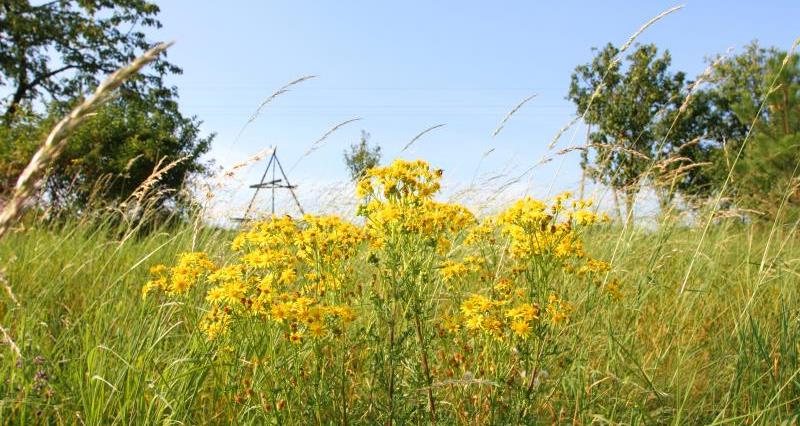Ragwort poses a real risk to animal health, with potentially fatal consequences if it is ingested by horses or livestock, either in its green or dried state. Left unchecked, a ragwort problem is likely to become worse, as the species is highly vigorous. A single specimen can produce up to 150,000 seeds with a germination rate of up to 70%.
Grazing land should be regularly inspected when animals are present and the plant should be pulled, removed and disposed of responsibly.
Ragwort is a toxic plant and suitable precautions must be taken when handling live and dead plants. Hands must be protected and arms and legs should also be covered. Cut and pulled flowering ragwort plants may still set seed.
Key resources:
- A Defra leaflet helps with (and other injurious weeds).
- A is available from Natural England if you wish to complain about an infestation of ragwort (or indeed any of the other listed injurious species).
- ┬аincluding the
When ragwort is on someone else's land
- Where ragwort is found, the first step is to identify the land owner or manager. Then contact them directly to resolve the issue.
- If this approach doesnтАЩt work, and enforcement notices can be issued requiring landowners to take action to prevent the spread of these weeds.
- Natural England will investigate complaints where there is a risk that injurious weeds might spread to neighbouring land. It gives priority to complaints where there is a risk of spread to land used for grazing horses or livestock, land used for forage production and other agricultural activities.
The Weed Act 1959
Five weeds are classified as тАШinjuriousтАЩ under the Weeds Act 1959 тАУ common ragwort (Senecio jacobaea), spear thistle (Cirsium vulgare), creeping or field thistle (Cirsium arvense), broad-leaved dock (Rumex obtusifolius) and curled dock (Rumex Crispus).
It is not an offence to have these weeds growing on your land and species such as ragwort have significant conservation benefits. However, ragwort must not be allowed to spread to agricultural land, particularly grazing areas or land which is used to produce conserved forage.
.
